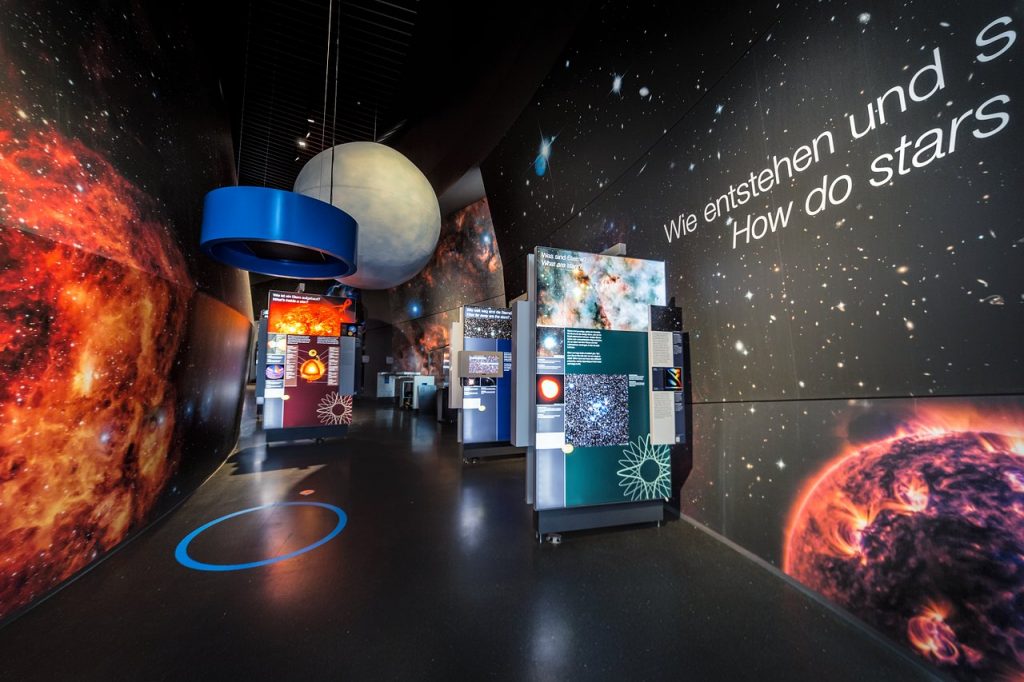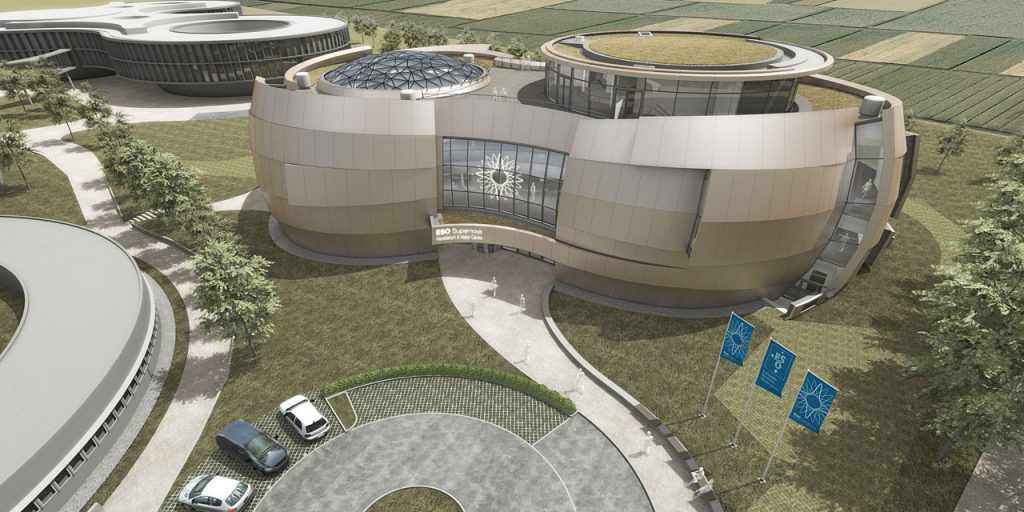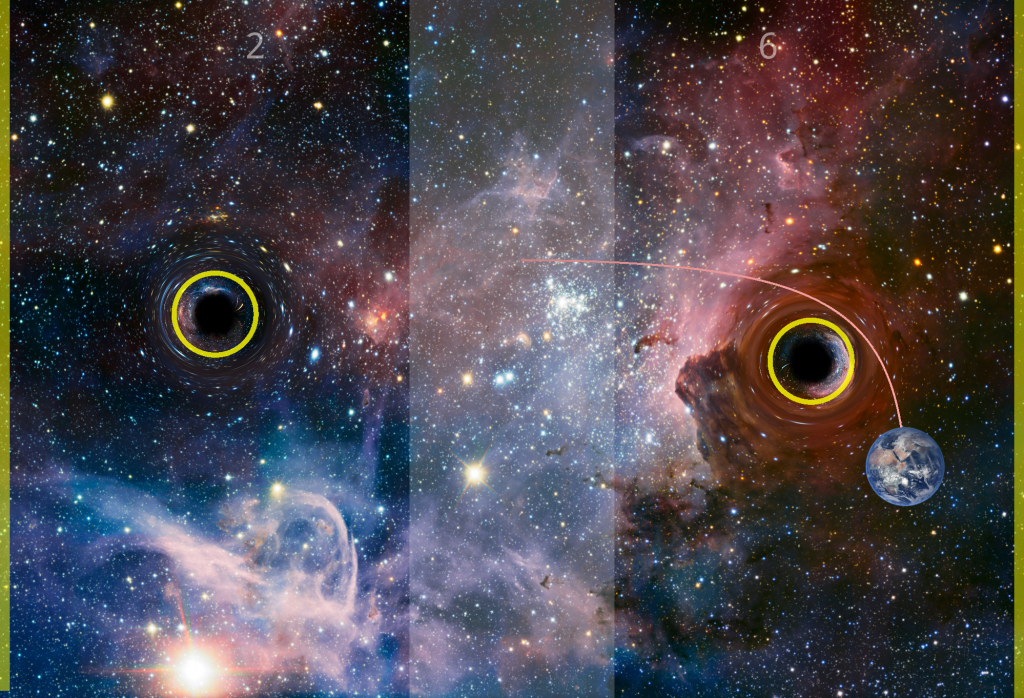New planetarium and astronomy visitor centre opened
Today, after three years of construction, the ESO Supernova Planetarium and Visitor Centre will be inaugurated. The new centre at the European Southern Observatory headquarters in Garching is an endowment from the Klaus Tschira Foundation. The state-of-the-art astronomy centre is tailored to convey the fascination and significance of astronomy andastrophysics to the public. The idea for the centre emanated from a cooperation between the ESO and the Heidelberg Institute for Theoretical Studies (HITS).
Awaiting visitors at the ESO Supernova are an interactive exhibition as well as the largest tilted 360-degree planetarium in Germany, Austria and Switzerland. The planetarium’s dome has a diameter of 14 meters, a tilt 25 degrees and has 110 seats available. Cuttingedge projection technology gives planetarium visitors the impression that they are actually traveling through the universe. “The Living Universe” exhibition consists of 13 astronomical topics spanning over 2,200 m² with a 284-meter long spiral ramp that guides visitors through the exhibits. The spiral ramp and a glass elevator allow visitors with disabilities to enjoy the full scope of the ESO Supernova. The exhibition also illuminates the most current scientific findings in astronomy and astrophysics. HITS, which was founded by Klaus Tschira and his foundation, guided the exhibitions conception, contributing scientific and technical expertise. Under the direction of Kai Polsterer, HITS staff developed interactive exhibits especially for the Supernova. Aided by computer simulations, virtual reality and innovative computer graphics, visitors can dive into a world that is both diverse and spellbinding.

“The Living Universe” exhibition at the ESO Supernova building for which HITS contributed its scientific and technical expertise (Picture: ESO).
Another impressive aspect is the 15-meter high starry ceiling above “The Void” that features the 22 constellations of the southern hemisphere. A 360-degree mapping of the Milky Way lines the walls of “The Void” and encourages closer exploration. “Astronomy was large passion of our founder Klaus Tschira,” said Beate Spiegel, managing director of the Klaus Tschira Foundation, “through this project, he wanted to share his fascination with the public. The ESO Supernova is the last building that he could personally initiate before he passed away in 2015.” The Supernova is operated by the ESO and its programs are designed for all age groups. Entrance is free of charge, however visitors need to register online beforehand. The ESO team put together a supplemental program including special tours, planetarium shows andworkshops for kindergarten, grammar and secondary school students. Training sessions for teachers are also offered at the Supernova.

The building‘s design is just as spectacular as what’s inside of the ESO Supernova. As the name already suggests, the center’s form resembles a close binary star system with one star transferring mass to its companion. This leads to the heavier star exploding as a supernova, briefly shining as bright as all the stars in a galaxy combined. Klaus Tschira drafted the design of the impressive
structure with help from the Bernhardt+Partner Architectural firm in Darmstadt. “Klaus Tschira enjoyed working together with the architects on unique building forms,” said Beate Spiegel, “For example, Heidelberg is home to the Haus der Astronomie that resembles a spiral galaxy and the ATC, modelled after a DNA double helix.” In select cases, architecture is the fourth area of focus of the Klaus Tschira Foundation, next to education, research and science communication.

Opening hours ESO Supernova:
Wednesday to Friday 9:00 am-17:00 pm
Saturday and Sunday 12:00 pm-17:00 pm
Free tickets can be booked online and printed out on arrival.
About Klaus Tschira Stiftung (KTS)
The Klaus Tschira Stiftung (KTS) was created in 1995 by the physicist and SAP co-founder Klaus Tschira (1940-2015). It is one of Europe’s largest privately funded non-profit foundations. The Foundation promotes the advancement of the natural sciences, mathematics, and computer science, and strives to raise appreciation for these fields. The Foundation’s commitment begins in kindergarten and continue in schools, universities, and research facilities. The Foundation champions new methods of scientific knowledge transfer, and supports both development and intelligible presentation of research findings.
Press Contact KTS:
Klaus Tschira Stiftung
Mara Knapp
E-Mail: mara.knapp@klaus-tschira-stiftung.de
Phone: +49 6221 533 151
About HITS
HITS, the Heidelberg Institute for Theoretical Studies, was established in 2010 by physicist and SAP co-founder Klaus Tschira (1940-2015) and the Klaus Tschira Foundation as a private, non-profit research institute. HITS conducts basic research in the natural, mathematical, and computer sciences. Major research directions include complex simulations across scales, making sense of data, and enabling science via computational research. Application areas range from molecular biology to astrophysics. An essential characteristic of the Institute is interdisciplinarity, implemented in numerous cross-group and cross-disciplinary projects. The base funding of HITS is provided by the Klaus Tschira Foundation.